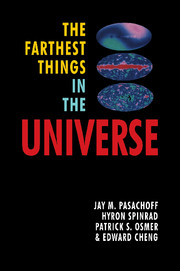CHAPTER TWO - The cosmic background radiation
Published online by Cambridge University Press: 04 August 2010
Summary
Looking up at the clear night sky, it is hard to avoid wondering about the many objects that we can see. It is simple to recognize with the naked eye that there are planets, countless stars, and the band of light from the disk of our own Galaxy, the Milky Way. With the help of binoculars or a small telescope, the complexity of the scene increases dramatically, and it becomes apparent that the glow of the Milky Way is the light from many faint stars. We also start to notice that there are numerous faint and fuzzy objects which are the nearby galaxies and the star-forming regions in our own Galaxy. Probing with more and more sophisticated instruments, the level of detail and structure that can be resolved using visible light increases until the light becomes so exceedingly faint that even the best detectors on the largest telescopes see only darkness. This is the regime of the farthest objects in the Universe.
Before discussing these objects in any detail, I would like to take a brief moment and address the question of how we can possibly know about things so remote in both distance and experience. After all, we invent and test the physical sciences here on Earth by making experiments, interacting with the world around us, and creating a system of beliefs (theories) that ties all these experiments together into a consistent and testable story.
- Type
- Chapter
- Information
- The Farthest Things in the Universe , pp. 25 - 56Publisher: Cambridge University PressPrint publication year: 1994



